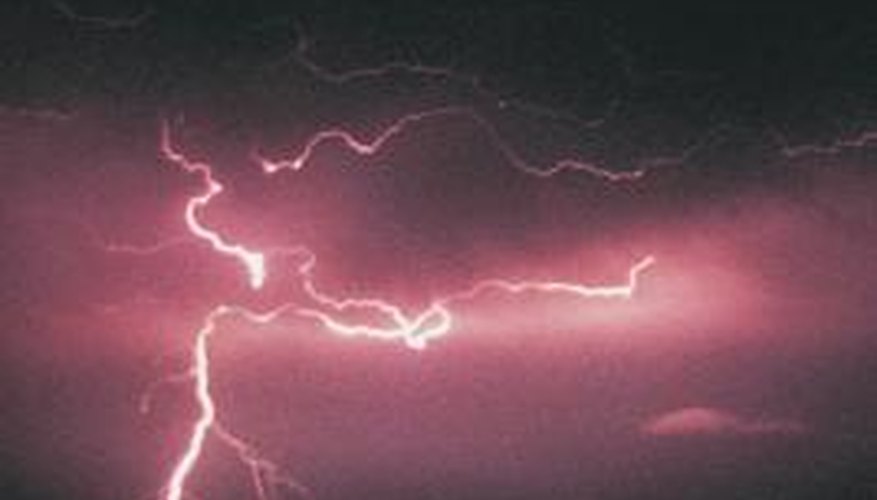The monsoon season starts at the beginning of July and ends in late September each year in the American Southwest. Wind patterns shift and more moisture enters the area, creating the potential for intense afternoon storms. The monsoon season, similar to the Midwest's tornado season or the Atlantic's hurricane season, can cause major damage and catch people off guard if they are not prepared.
What is a Monsoon?
Monsoons refer to a changing wind pattern that happens in several areas of the world. In the Southwestern United States, the typical wind pattern comes in from the west or northwest. During the monsoon season, wind patterns shift to coming from the south or southeast. This shift in winds brings moisture from the Gulf of Mexico, the Gulf of California and the Pacific Ocean. As this moisture hits the mountain ranges and higher elevations of the Southwest, it cools and forms afternoon thunderstorms.
- Monsoons refer to a changing wind pattern that happens in several areas of the world.
- During the monsoon season, wind patterns shift to coming from the south or southeast.
What are the Advantages of the Monsoons?
The monsoons bring much-needed moisture into the desert region of the Southwest. During May and June, the area typically suffers from drought conditions. The seasonal rains make it possible for agriculture, forests and inhabitants of the region to store water for the next dry cycle of the climate. The monsoon season also brings lower temperatures to the Southwest.
- The monsoons bring much-needed moisture into the desert region of the Southwest.
- The seasonal rains make it possible for agriculture, forests and inhabitants of the region to store water for the next dry cycle of the climate.
What are the Disadvantages of the Monsoon Season?
Monsoons have the potential to be extremely violent weather systems. Drought-stricken land can be suddenly drenched with several inches of rain. Property-damaging hail is common during the monsoon season, as are wildfires started when lightning strikes without producing rain in an area. Arroyos and canyons are prone to flooding as runoff from higher areas rush to carry excess rainfall through to lower areas. In areas that were burnt by wildfires in previous years, mudslides and soil erosion can cause widespread damage to crops, homes and roads.
- Monsoons have the potential to be extremely violent weather systems.
- Arroyos and canyons are prone to flooding as runoff from higher areas rush to carry excess rainfall through to lower areas.
Staying Safe During the Monsoon Season
Staying informed is key to personal safety during the monsoon season. Listen to local weather forecasts and, when outdoors, keep an eye on the sky. Thunderstorms typically develop in the afternoons. When they develop over higher terrain, flash flooding can occur in low-lying areas. Monsoons can also produce fire-causing lightening strikes and hail as well as a torrential downpour of rain.
- Staying informed is key to personal safety during the monsoon season.
- Monsoons can also produce fire-causing lightening strikes and hail as well as a torrential downpour of rain.
